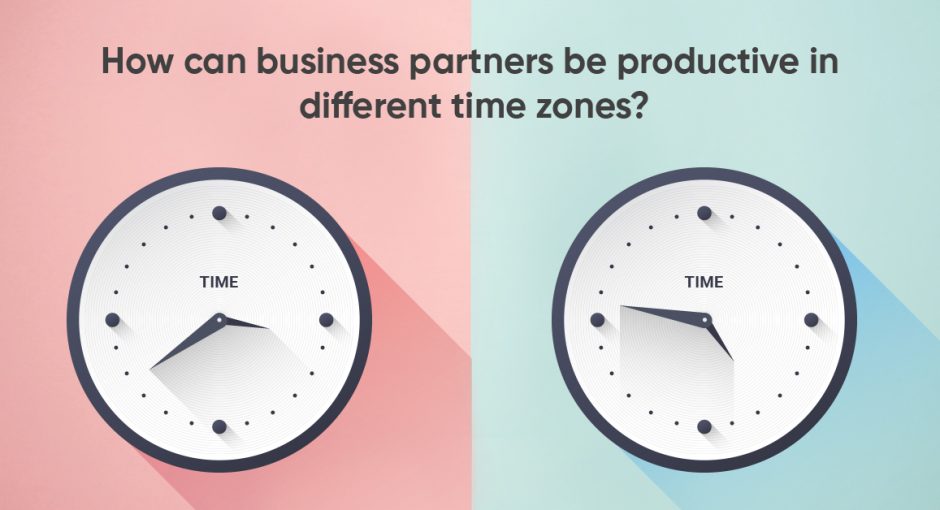Today, it’s no more a jaw-dropping scenario if clients and service providers work in different time zones. Still, from management’s viewpoint, it’s interesting to know how something like this is sustainable.
For instance, someone in India is required to stay sharp till 9 pm (IST), to engage with clients in the US at 11 am, who have just started their day, all because of different time zones. It’s not as easy as it sounds.
That being said, time-shifting is becoming a common phenomenon among service providers and clients. People are no more restricted to standard working hours, and they are working flexibly to accommodate clients. It’s not that they are working 24×7, but they are simply allocating and prioritizing their time, to get the most out of their endeavors.
Suppose there is a project manager who is handling clients from Asia, Europe, and the US. He can wake up at 4:30 am to engage with his Asian clients and then shift his focus on his European clients in the afternoon, and finally interact with his clients from the US in the evening.
For someone who truly loves his job, this shouldn’t be a problem. There is a lot of management in this strategy, and no one is going crazy with his working hours.
It’s more of a psychological shift than anything else.
Following are a few more ideas which business partners belonging to different time zones can consider, to collaborate efficiently.
1. Building a global or a virtual team
It’s more of a natural and an obvious step, to hire people who are dispersed across different time zones, instead of operating from a single offshore site. So whenever a new project comes in, the IT service provider can curate a team that is located in the client’s city.
Suppose there is an IT service provider who has their client’s servicing team in Sydney, their creative department in New York, and their design studio in Stockholm.
So if they have a client from New York, then based on the client’ feedback, their creative department can collaborate with their design studio to enhance client’s branding, while their servicing team sleeps peacefully in Sydney. The very next morning, the new developments can be discussed with the servicing team through a conference call.
Just to put it across differently, in the above example, the client has a point of contact, irrespective of the time of the day. That client can be you if you collaborate with a technology partner who has a virtual team.
It’s not just about the client. For the service provider itself, having a virtual team increases the scope for cross-pollination, which creates a space conducive for knowledge sharing and innovation.
2. Use tools and organize yourself
Don’t take everything upon yourself. In other words, don’t set out to calculate the time zone differences all by yourself. It will drive you crazy. Instead, make use of tools to organize your day better.
You can use World Time Buddy. This brilliant tool can work as a constant reminder for you. You can access information on every time zone, and can use ‘Time Zone Converter’.
You can use any other tool, something you logically connect with, or something you find more intuitive.
Slack, for instance, lists users’ time zone. So you can be aware of the time difference between you and your client at all times. You can get to know your technology partner’s current local time, whenever you click on their name. This can help you greatly, as you can get an idea of whether your technology partner can give you an immediate reply or not.
3. Play on the trust factor
No matter how hard people try, when business partners belong to different time zones and are also culturally different, there are chances of a communication breakdown. Here are a few tips from our side to tackle such cultural clashes.
So it’s important that both you and your technology partner keep in touch through not just emails but video calls too. Video calls can be more comforting for you both and can build that much-needed trust, especially in a scenario where communication gaps can occur.
It’s important to keep that human element alive, and scheduling a video call every once in a while, can achieve that purpose.
From your partner’s point of view, it creates a sense of reachability.
4. Understand your productivity levels
The productivity levels of every person peak at different times of the day. You can’t maintain your enthusiastic energies throughout the day. So it’s better you understand your productivity levels, and set your limits accordingly.
For example, if your ability to make decisions or pay attention to details takes a dip after 10 pm, then it’s better to take a power nap in the afternoon so that you have more vitality in the evening. This way you can better manage your communication with your technology partner.
Also, it’s important that you give some leeway to your technology partner. They may not be able to accommodate all your expectations. It’s better to set some ground rules in the very beginning so that you know about your technology partner’s availability and workload, and you set reasonable deadlines. You shouldn’t be apprehensive in making things clear with your technology partner.
Conclusion
For your technology partner, it’s all about managing their clients’ business, without developing bizarre sleeping patterns, otherwise the word “Manage” won’t make much sense.
They need to find your own rhythm and find what works for them. It’s important for them to stick to a strict schedule that accommodates their clients’ time zones.
On your part, you just need to focus on solid communication and what strategies can help them achieve that. If you transparently communicate your pain points to your technology partner managing multiple time zones won’t be much of an issue.
We hope you found this write-up insightful. You can refer to our write-up on virtual project management, to develop a better perspective.





